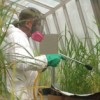 Certification is a process that allows a person to qualify to use pesticides in the course of his or her occupation. In Florida, the Florida Department of Agriculture and Consumer Services (FDACS) administers the certification process. Training provides instruction on proper pesticide use and handling to individuals who want to obtain or retain certification. In Florida, UF/IFAS Extension primarily conducts pesticide training, but other associations, industry, non-profit organizations, private companies, and federal and state government agencies also provide and assist with training. This 3-page fact sheet was written by F. M. Fishel, and published by the UF Department of Agronomy, October 2013.
Certification is a process that allows a person to qualify to use pesticides in the course of his or her occupation. In Florida, the Florida Department of Agriculture and Consumer Services (FDACS) administers the certification process. Training provides instruction on proper pesticide use and handling to individuals who want to obtain or retain certification. In Florida, UF/IFAS Extension primarily conducts pesticide training, but other associations, industry, non-profit organizations, private companies, and federal and state government agencies also provide and assist with training. This 3-page fact sheet was written by F. M. Fishel, and published by the UF Department of Agronomy, October 2013.
http://edis.ifas.ufl.edu/pi247
Tag: Frederick M. Fishel
The Importance of Keeping Pesticide Records (PI246)
 Keeping accurate records of pesticide use makes good sense. In some cases, you are required by law to maintain records on pesticide use, but having records available can also help you improve your operation. This 8-page fact sheet outlines who is required to keep records of pesticide use and the appropriate contents. Written by F. M. Fishel, and published by the UF Department of Agronomy, May 2013.
Keeping accurate records of pesticide use makes good sense. In some cases, you are required by law to maintain records on pesticide use, but having records available can also help you improve your operation. This 8-page fact sheet outlines who is required to keep records of pesticide use and the appropriate contents. Written by F. M. Fishel, and published by the UF Department of Agronomy, May 2013.
http://edis.ifas.ufl.edu/pi246
Water Quality and the Effectiveness of Pesticides (PI245)
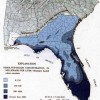 Pesticide applicators do not usually blame the mix for a pest control failure. Rather, the applicator will check if the correct pesticide was chosen for the job, if the pest was misidentified, if application equipment was properly calibrated, or if there was pesticide resistance. However, pesticide applicators should be aware that water quality can play a role in the efficacy of a pesticide treatment. Some pesticides lose their effectiveness when mixed with water that contains suspended or dissolved solids. This publication discusses how water quality affects pesticide mixes. This 2-page fact sheet was written by F. M. Fishel, and published by the UF Department of Agronomy, April 2013.
Pesticide applicators do not usually blame the mix for a pest control failure. Rather, the applicator will check if the correct pesticide was chosen for the job, if the pest was misidentified, if application equipment was properly calibrated, or if there was pesticide resistance. However, pesticide applicators should be aware that water quality can play a role in the efficacy of a pesticide treatment. Some pesticides lose their effectiveness when mixed with water that contains suspended or dissolved solids. This publication discusses how water quality affects pesticide mixes. This 2-page fact sheet was written by F. M. Fishel, and published by the UF Department of Agronomy, April 2013.
http://edis.ifas.ufl.edu/pi245
The EPA Conventional Reduced Risk Pesticide Program (PI224)
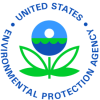 The Food Quality Protection Act (FQPA) of 1996 initiated the U.S. Environmental Protection Agency’s (EPA) Conventional Reduced Risk Pesticide Program. Its purpose is to expedite the review and registration process of conventional pesticides that pose less risk to human health and the environment than existing conventional alternatives. Riskier conventional alternatives are those pesticides EPA deems as having neurotoxic, carcinogenic, reproductive, and developmental toxicity, or groundwater contamination effects. It serves as a means to ensure that reduced risk pesticides enter the channels of trade and are available to growers as soon as possible. This 11-page fact sheet was written by F.M. Fishel, and published by the UF Department of Agronomy, April 2013.
The Food Quality Protection Act (FQPA) of 1996 initiated the U.S. Environmental Protection Agency’s (EPA) Conventional Reduced Risk Pesticide Program. Its purpose is to expedite the review and registration process of conventional pesticides that pose less risk to human health and the environment than existing conventional alternatives. Riskier conventional alternatives are those pesticides EPA deems as having neurotoxic, carcinogenic, reproductive, and developmental toxicity, or groundwater contamination effects. It serves as a means to ensure that reduced risk pesticides enter the channels of trade and are available to growers as soon as possible. This 11-page fact sheet was written by F.M. Fishel, and published by the UF Department of Agronomy, April 2013.
http://edis.ifas.ufl.edu/pi224
Storage Limitation Statements: Temperature – Herbicides (PI123/PI160)
 This 8-page guide provides information about how temperature affects storage of agricultural herbicides. A table is included that lists many common agricultural herbicides registered for use in Florida, with storage limitation statements. Written by Frederick M. Fishel, and published by the UF Department of Agronomy, April 2013.
This 8-page guide provides information about how temperature affects storage of agricultural herbicides. A table is included that lists many common agricultural herbicides registered for use in Florida, with storage limitation statements. Written by Frederick M. Fishel, and published by the UF Department of Agronomy, April 2013.
http://edis.ifas.ufl.edu/pi160
Storage Limitation Statements: Temperature – Fungicides (PI122/PI159)
 This 7-page fact sheet provides information about how temperature affects storage of agricultural fungicides. A table is included that lists many common agricultural fungicides registered for use in Florida along with storage limitations. was written by Frederick M. Fishel, and published by the UF Department of Agronomy, March 2013.
This 7-page fact sheet provides information about how temperature affects storage of agricultural fungicides. A table is included that lists many common agricultural fungicides registered for use in Florida along with storage limitations. was written by Frederick M. Fishel, and published by the UF Department of Agronomy, March 2013.
http://edis.ifas.ufl.edu/pi159
Is Our Food Safe from Pesticides? (PI230)
 Growers of the food supply have adopted the use of integrated pest management (IPM) because it is no longer possible to rely solely on chemical pesticides to prevent unacceptable crop losses. According to the U.S. Environmental Protection Agency (EPA), IPM is the coordinated use of pest and environmental information and available pest control methods to prevent unacceptable levels of damage by the most economical means with the least possible hazard to people, property, and the environment. Scientific IPM strategies give the grower economic incentives for sustaining long-term crop protection with minimal disruption to the environment. The agricultural community typically will use pesticides sparingly as part of the IPM strategy whenever proven alternatives are not available for pest control. This 4-page fact sheet was written by Frederick M. Fishel, and published by the UF Department of Agronomy, March 2013.
Growers of the food supply have adopted the use of integrated pest management (IPM) because it is no longer possible to rely solely on chemical pesticides to prevent unacceptable crop losses. According to the U.S. Environmental Protection Agency (EPA), IPM is the coordinated use of pest and environmental information and available pest control methods to prevent unacceptable levels of damage by the most economical means with the least possible hazard to people, property, and the environment. Scientific IPM strategies give the grower economic incentives for sustaining long-term crop protection with minimal disruption to the environment. The agricultural community typically will use pesticides sparingly as part of the IPM strategy whenever proven alternatives are not available for pest control. This 4-page fact sheet was written by Frederick M. Fishel, and published by the UF Department of Agronomy, March 2013.
http://edis.ifas.ufl.edu/pi230
EPA’s Endocrine Disruptor Screening Program (EDSP) (PI227)
 People have asked questions in recent years concerning the effects that certain chemicals may have on the endocrine system of humans and wildlife. Laboratory studies have produced evidence that show various chemicals disrupt the endocrine systems of animals. Other evidence has shown that the endocrine systems of certain fish and wildlife species have been affected by chemical contaminants. Do some of these same chemical contaminants also affect the human endocrine system? Do pesticides cause these effects? The relationship between human diseases of the endocrine system and exposure to environmental contaminants is poorly understood and controversial. This 2-page fact sheet discusses the U.S. Environmental Protection Agency’s (EPA) screening program for potential effects to the endocrine system caused by pesticide exposure. Written by F.M. Fishel, and published by the UF Department of Agronomy, March 2013.
People have asked questions in recent years concerning the effects that certain chemicals may have on the endocrine system of humans and wildlife. Laboratory studies have produced evidence that show various chemicals disrupt the endocrine systems of animals. Other evidence has shown that the endocrine systems of certain fish and wildlife species have been affected by chemical contaminants. Do some of these same chemical contaminants also affect the human endocrine system? Do pesticides cause these effects? The relationship between human diseases of the endocrine system and exposure to environmental contaminants is poorly understood and controversial. This 2-page fact sheet discusses the U.S. Environmental Protection Agency’s (EPA) screening program for potential effects to the endocrine system caused by pesticide exposure. Written by F.M. Fishel, and published by the UF Department of Agronomy, March 2013.
http://edis.ifas.ufl.edu/pi227
Children and Pesticides (PI226)
 Children act fast, but so do poisons, including pesticides. Fortunately for most parents, their children are not harmed when the parents have a momentary lapse and aren’t supervising them for a short time. But how would parents respond if they suddenly turn around, and their toddler is holding a can of household aerosol insect killer? This 3-page fact sheet outlines some facts and precautionary measures regarding children and pesticides in the home environment, so parents have a better idea of how to keep harmful chemical products away from their children. Written by F.M. Fishel, and published by the UF Department of Agronomy, March 2013.
Children act fast, but so do poisons, including pesticides. Fortunately for most parents, their children are not harmed when the parents have a momentary lapse and aren’t supervising them for a short time. But how would parents respond if they suddenly turn around, and their toddler is holding a can of household aerosol insect killer? This 3-page fact sheet outlines some facts and precautionary measures regarding children and pesticides in the home environment, so parents have a better idea of how to keep harmful chemical products away from their children. Written by F.M. Fishel, and published by the UF Department of Agronomy, March 2013.
http://edis.ifas.ufl.edu/pi226
Guia de seguridad para el uso de pesticidas en el hogar (PI244)
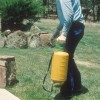 En este documento se describen las medidas que ayudarán en la toma de decisiones inteligentes y seguras sobre la utilización de plaguicidas en el hogar y césped/jardín. This 4-page fact sheet was written by Frederick M. Fishel, and published by the UF Department of Agronomy, December 2012.
En este documento se describen las medidas que ayudarán en la toma de decisiones inteligentes y seguras sobre la utilización de plaguicidas en el hogar y césped/jardín. This 4-page fact sheet was written by Frederick M. Fishel, and published by the UF Department of Agronomy, December 2012.
http://edis.ifas.ufl.edu/pi244
Equipo de Proteccion Personal para la Manipulacion de Pesticidas (PI243)
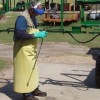 Este documento describe diversos artículos de equipo de protección personal (EPP) que se usan para proteger el cuerpo humano del contacto con pesticidas o residuos de pesticidas. El EPP incluye elementos tales como overoles o trajes protectores, calzado, guantes, delantales, mascarillas, gafas y sombreros. This 12-page fact sheet was written by Frederick Fishel, and published by the UF Department of Agronomy, December 2012.
Este documento describe diversos artículos de equipo de protección personal (EPP) que se usan para proteger el cuerpo humano del contacto con pesticidas o residuos de pesticidas. El EPP incluye elementos tales como overoles o trajes protectores, calzado, guantes, delantales, mascarillas, gafas y sombreros. This 12-page fact sheet was written by Frederick Fishel, and published by the UF Department of Agronomy, December 2012.
http://edis.ifas.ufl.edu/pi243
Fungicide Resistance Action Committee's (FRAC) Classification Scheme of Fungicides According to Mode of Action (PI94/PI131)
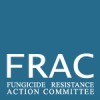 This guide addresses management of pesticide resistance and describes the Fungicide Resistance Action Committee’s (FRAC) classification of fungicides and bactericides registered for agricultural and non-agricultural use in Florida by their modes of action. A cross-reference of common names for active ingredients, along with corresponding examples of their trade names, is also provided. Written by F.M. Fishel and M.M. Dewdney, and published by the UF Department of Agronomy, November 2012.
This guide addresses management of pesticide resistance and describes the Fungicide Resistance Action Committee’s (FRAC) classification of fungicides and bactericides registered for agricultural and non-agricultural use in Florida by their modes of action. A cross-reference of common names for active ingredients, along with corresponding examples of their trade names, is also provided. Written by F.M. Fishel and M.M. Dewdney, and published by the UF Department of Agronomy, November 2012.
http://edis.ifas.ufl.edu/pi131
Pesticidas y Colinesterasa (PI242)
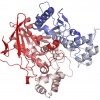 Esta publicación describe la colinesterasa, cómo varios pesticidas de diferentes familias pueden afectar los niveles de colinesterasa en los seres humanos; y la importancia del control oportuno de los niveles de colinesterasa de las personas que manejan pesticidas organofosforados o carbamatos que inhiben la colinesterasa. This 3-page fact sheet was written by Frederick M. Fishel, and published by the UF Department of Agronomy, October 2012.
Esta publicación describe la colinesterasa, cómo varios pesticidas de diferentes familias pueden afectar los niveles de colinesterasa en los seres humanos; y la importancia del control oportuno de los niveles de colinesterasa de las personas que manejan pesticidas organofosforados o carbamatos que inhiben la colinesterasa. This 3-page fact sheet was written by Frederick M. Fishel, and published by the UF Department of Agronomy, October 2012.
http://edis.ifas.ufl.edu/pi242
How to Report Pesticide Misuse in Florida (PI241)
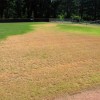 Pesticides provide benefits in many facets of daily life, including protecting food production and health, enhancing our recreational areas, maintaining our rights-of-way, and protecting wildlife, aquatic sites, and natural areas. However, misuse does occur and those who are negligent must take responsibility for their actions. This 3-page fact sheet was written by F. M. Fishel, and published by the UF Department of Agronomy, October 2012.
Pesticides provide benefits in many facets of daily life, including protecting food production and health, enhancing our recreational areas, maintaining our rights-of-way, and protecting wildlife, aquatic sites, and natural areas. However, misuse does occur and those who are negligent must take responsibility for their actions. This 3-page fact sheet was written by F. M. Fishel, and published by the UF Department of Agronomy, October 2012.
http://edis.ifas.ufl.edu/pi241
Refillable Containers and Secondary Containment Requirements for Agricultural Pesticides in Florida (PI240)
 This 4-page fact sheet discusses the requirements for selection and design of containers and dispensing areas,as well as operation, inspection, maintenance and recordkeeping. Written by Bonnie Wells and F.M. Fishel and published by the UF Department of Agronomy, January 2012.
This 4-page fact sheet discusses the requirements for selection and design of containers and dispensing areas,as well as operation, inspection, maintenance and recordkeeping. Written by Bonnie Wells and F.M. Fishel and published by the UF Department of Agronomy, January 2012.
http://edis.ifas.ufl.edu/pi240
Applying Pesticides in Compliance with the National Pollutant Discharge Elimination System (NPDES) (PI239)
 On October 31, 2011, EPA issued a final National Pollutant Discharge Elimination System (NPDES) Pesticide Generic Permit for point source discharges from the application of pesticides to waters of the United States. This 10-page fact sheet explains what is now required for pesticide applications in Florida. Written by F.M. Fishel, and published by the UF Department of Agronomy, December 2011.
On October 31, 2011, EPA issued a final National Pollutant Discharge Elimination System (NPDES) Pesticide Generic Permit for point source discharges from the application of pesticides to waters of the United States. This 10-page fact sheet explains what is now required for pesticide applications in Florida. Written by F.M. Fishel, and published by the UF Department of Agronomy, December 2011.
http://edis.ifas.ufl.edu/pi239
Rainfastness of Pesticides (PI238)
 Generally, it is best to avoid pesticide application when rainfall is likely; however, weather can be unpredictable, so it is best to choose a product with good rainfast characteristics. Learn more in this 3-page fact sheet written by Bonnie Wells and F.M. Fishel, and published by the UF Department of Agronomy, August 2011.
Generally, it is best to avoid pesticide application when rainfall is likely; however, weather can be unpredictable, so it is best to choose a product with good rainfast characteristics. Learn more in this 3-page fact sheet written by Bonnie Wells and F.M. Fishel, and published by the UF Department of Agronomy, August 2011.
http://edis.ifas.ufl.edu/pi238
The Role of the Codex Alimentarius in Determining International Standards for Pesticides and Food (PI237)
 People have the right to expect their food to be safe, of good quality, and suitable for consumption, and national governments must ensure that food imported from other countries is safe. But laws and regulations to minimize threats can create barriers to international food trade. The Codex Alimentarius aims to facilitate international trade by promoting definitions and requirements for foods. This 3-page fact sheet was written by F.M. Fishel, and published by the UF Department of Agronomy, August 2011. (image from usda.gov)
People have the right to expect their food to be safe, of good quality, and suitable for consumption, and national governments must ensure that food imported from other countries is safe. But laws and regulations to minimize threats can create barriers to international food trade. The Codex Alimentarius aims to facilitate international trade by promoting definitions and requirements for foods. This 3-page fact sheet was written by F.M. Fishel, and published by the UF Department of Agronomy, August 2011. (image from usda.gov)
http://edis.ifas.ufl.edu/pi237
Calibrating Equipment for Aquatic Herbicide Application (PI236)

Calibration is the process of measuring and adjusting equipment performance. It is not difficult, but it does require some math. This 12-page fact sheet provides standard formulas and conversion factors incorporated into practical examples to help with calibration. Written by F.M. Fishel and published by the UF Department of Agronomy, July 2011.
http://edis.ifas.ufl.edu/pi236
IRAC’s Insecticide Mode of Action Classification (PI83/PI121)
This 6-page fact sheet explains the rationale behind the Insecticide Resistance Action Committee’s (IRAC) insecticide and acaricide mode of action classification and provides a listing of those insecticide common names with their groupings and primary modes of action for insecticides currently registered in Florida. Written by Frederick M. Fishel and published by the UF Department of Agronomy, April 2011.
http://edis.ifas.ufl.edu/pi121